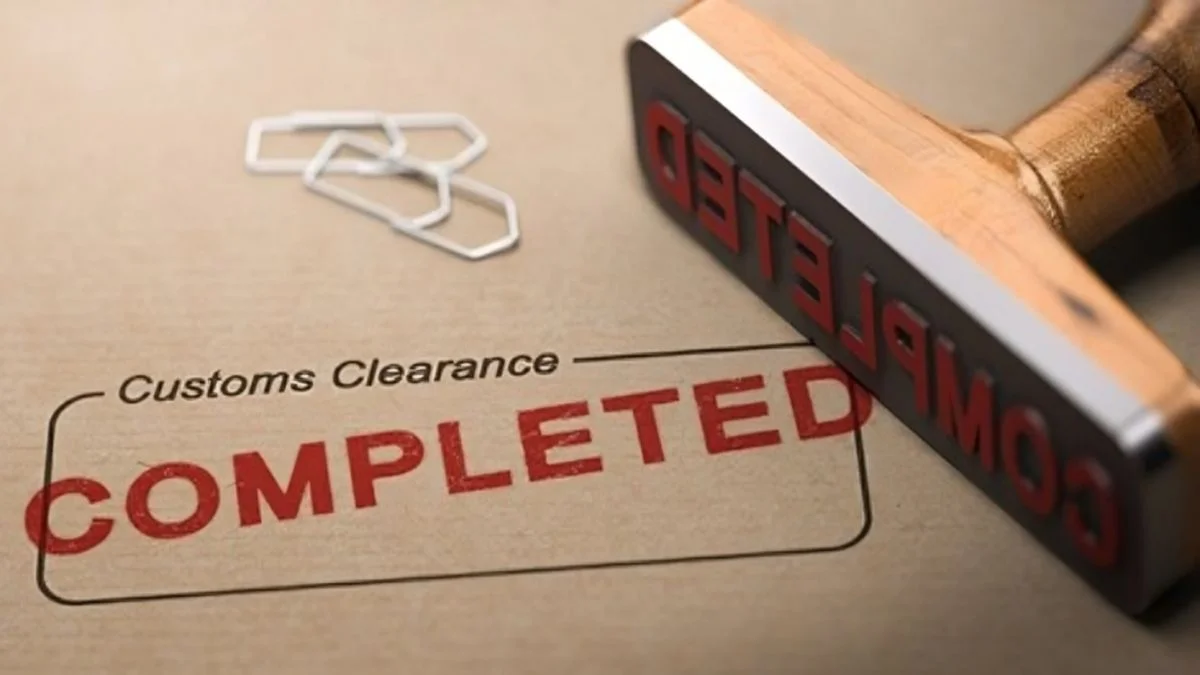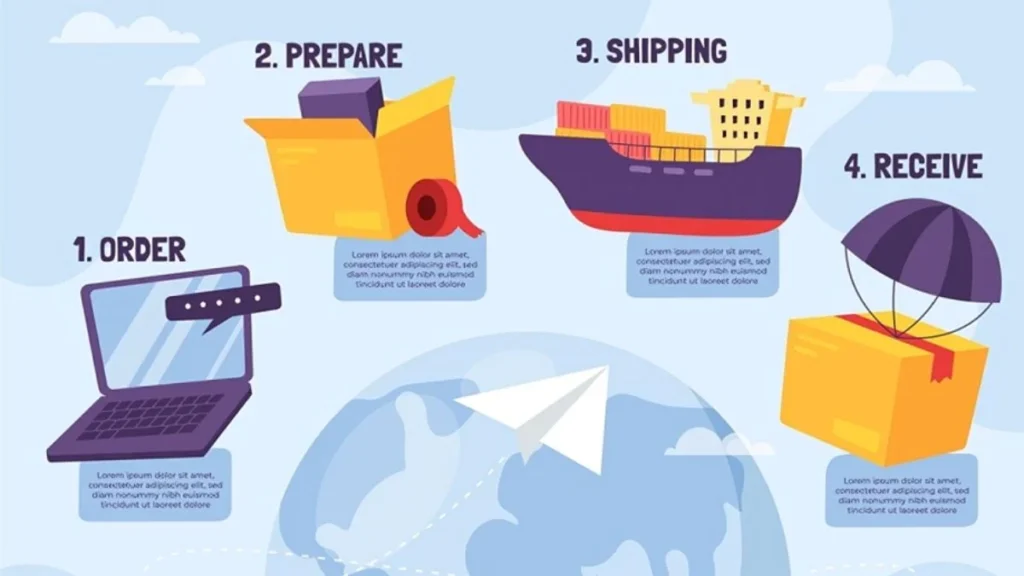GENERAL
Understanding the Customs Clearance Process for Imports: A Comprehensive Guide

“🚢✈️ Get insights on the Custom Clearance process for import with our extensive guide. Making importation hassle-free! 📚🌍💼”
Understanding how customs clearance works is not just a matter of paperwork—it’s a fundamental part of global trade. An efficient clearance process ensures your shipments reach their destinations without unnecessary delays, extra costs, or compliance issues.
Table of Contents
What Is Customs Clearance in the Context of Imports?
Customs clearance is the official process by which goods are authorized to enter a country. This involves submitting the required documentation to customs authorities, ensuring compliance with national regulations, and paying any applicable duties and taxes. It is essentially the government’s way of tracking and regulating what comes into the country while also collecting revenue through tariffs and taxes. Get more information by clicking here.
For importers, customs clearance is a critical checkpoint. Without it, goods can be delayed, returned, or even confiscated. Proper handling of this process facilitates legal trade and protects the integrity of national borders.
Why Is the Customs Clearance Process So Important?
The customs clearance process is a cornerstone of international commerce. Its importance extends beyond just regulatory compliance—it plays a key role in ensuring that goods flow smoothly across borders. A successful clearance process ensures that supply chains remain uninterrupted, customer demands are met, and businesses continue to thrive in the global marketplace.
Moreover, being proficient in customs clearance allows businesses to avoid penalties, minimize shipment delays, and gain a competitive edge by streamlining operations. For individuals importing personal goods, understanding the process helps prevent unexpected costs or complications.
Breaking Down the Stages of Customs Clearance
The customs clearance process unfolds in several key stages, each requiring careful attention to detail.
The journey begins with the preparation and submission of documents. Importers must collect essential paperwork, including the commercial invoice, bill of lading or airway bill, packing list, and other necessary certifications or licenses based on the type of goods being imported.
Once documentation is in order, the next step is the customs declaration. This involves submitting detailed information about the goods, such as their classification, value, and origin, to the relevant customs authorities. Accuracy is crucial here, as errors may trigger inspections or fines.
Following the declaration, customs officials assess duties and taxes. This is calculated based on the goods’ value and classification within the Harmonised System (HS) code framework. Once the duties are determined, the importer must arrange payment.
Depending on the nature of the goods or red flags in documentation, customs may decide to conduct a physical inspection. This stage is not always required, but can occur for verification, safety, or compliance checks.
The final stage involves payment confirmation and release of goods. Once everything is cleared, the shipment is approved for delivery and can enter the local market or proceed to its destination.
What Influences the Customs Clearance Process?
Several factors can impact how smoothly the customs clearance process goes.
One major element is the accuracy of your documentation. Incomplete or inaccurate paperwork is a common cause of delays. The type of goods and their classification also play a major role, as some products are subject to stricter controls or require special permits.
Another influence is the country of origin and destination. Bilateral trade agreements, tariffs, and local import laws all affect how quickly and easily your goods pass through customs.
The experience level of those handling the import process—whether it’s the importer directly or a hired customs broker—can also impact the outcome. Using outdated information or failing to comply with current trade laws can lead to unnecessary obstacles.
Challenges Commonly Faced During Customs Clearance
Even the most experienced importers encounter roadblocks during customs clearance. Challenges can range from last-minute document changes and regulatory updates to system outages or miscommunication between stakeholders.
Resource limitations, such as understaffed customs offices or slow response times, can further complicate the process. Misunderstandings in shipping terms or labelling issues often lead to inspection holds or misrouted goods.
To navigate these challenges successfully, importers must remain flexible, vigilant, and well-informed. Identifying potential issues early, seeking professional support, and maintaining a problem-solving mindset are key to reducing risk.
How to Create a Strong Customs Clearance Strategy
Building a well-thought-out strategy begins with defining clear goals. A good approach includes detailed planning, timelines, and allocation of resources for each stage of the process. This ensures that all aspects of importation are managed proactively, rather than reactively.
Each member of your team or supply chain should understand their responsibilities. This coordinated effort makes the entire process more efficient and helps avoid last-minute confusion.
Having contingency plans in place is also vital. Whether it’s dealing with a customs inspection, delayed payments, or sudden changes in regulations, being prepared ensures business continuity.
Should You Use a Customs Broker?
Deciding whether to hire a customs broker depends on your familiarity with the process and the complexity of your shipments.
On one hand, customs brokers bring expert knowledge of trade laws, tariff classifications, and import documentation. They save time, reduce errors, and can communicate directly with customs authorities on your behalf.On the other hand, brokers come at a cost. Relying too heavily on external services can also limit your in-house understanding of how customs procedures work. However, for most businesses—especially those dealing with large volumes or unfamiliar markets—partnering with a broker is a smart investment.

Best Practices for a Smooth and Efficient Process
A successful customs clearance strategy depends on a few core habits. First, keep your documentation organized and up-to-date. Digital tools and software can streamline how you manage declarations and track shipments.
Second, ensure your entire team is educated on customs protocols. Regular training and reviews help keep everyone aligned, especially when regulations evolve.
Finally, communication is key. Establish direct and open lines of communication between your logistics providers, customs brokers, and internal departments. This prevents delays and reduces misunderstandings during critical stages.
Conclusion: Taking Control of the Import Journey
Navigating customs clearance doesn’t have to be a frustrating experience. With the right knowledge and preparation, you can turn what seems like a bureaucratic hurdle into a streamlined and manageable part of your import process.
Be patient, stay informed, and don’t hesitate to seek expert help when needed. The more proactive you are, the smoother the journey will be.
-

 GENERAL2 months ago
GENERAL2 months agoUncovering the World of кинокрадко: The Dark Side of Film Piracy
-

 GENERAL4 weeks ago
GENERAL4 weeks agoUnveiling the Art of преводсч: How Translators Bridge Language Barriers
-

 YOGA1 year ago
YOGA1 year ago4 Person Yoga Poses for Beginners
-

 GENERAL2 months ago
GENERAL2 months agoThe Journey of iamnobody89757: From Anonymous User to Internet Sensation























